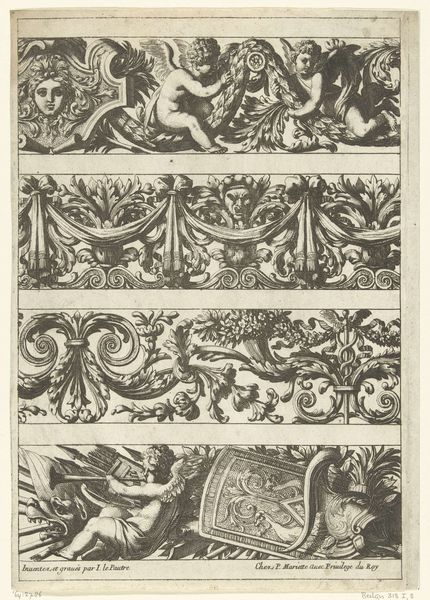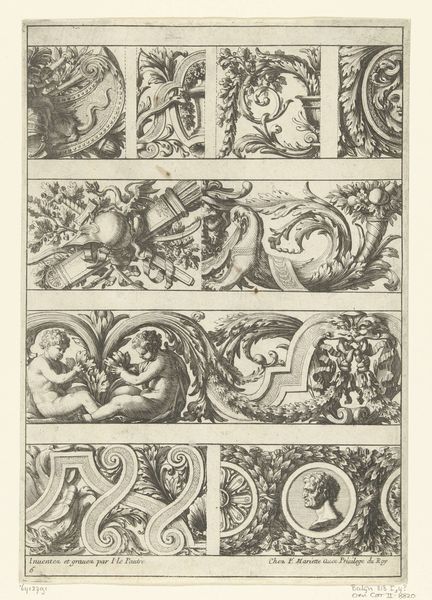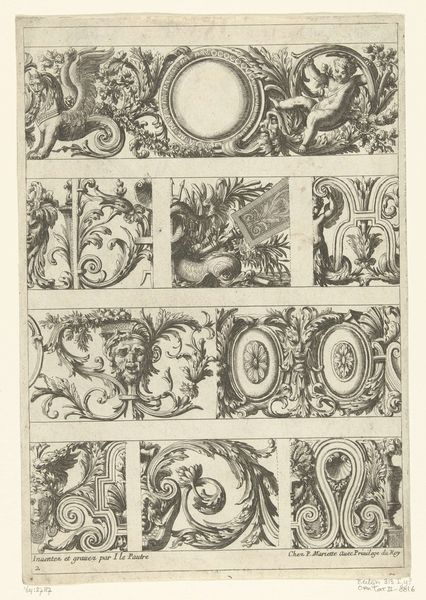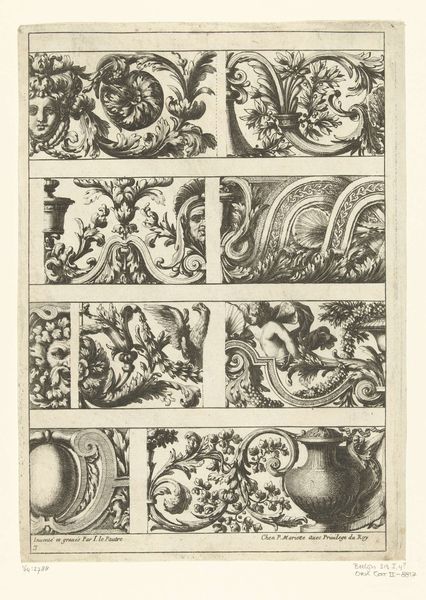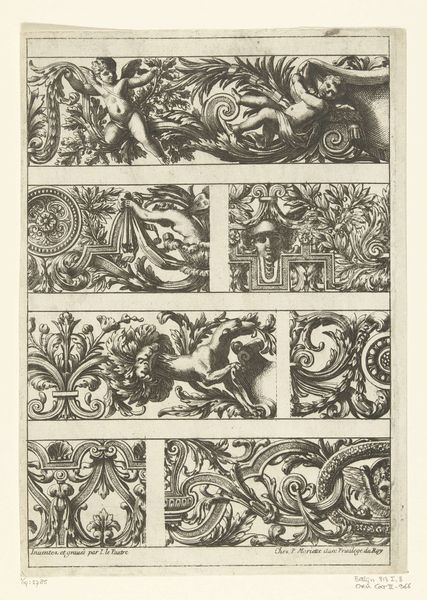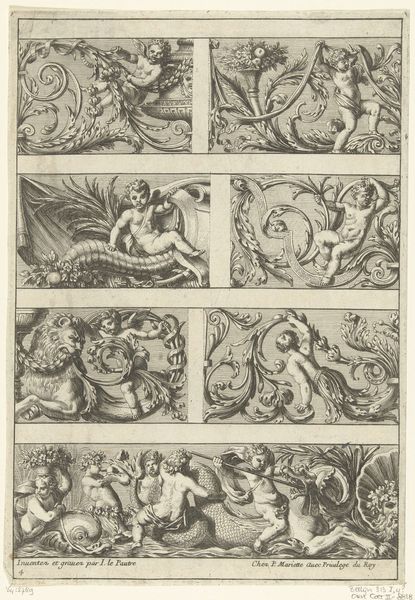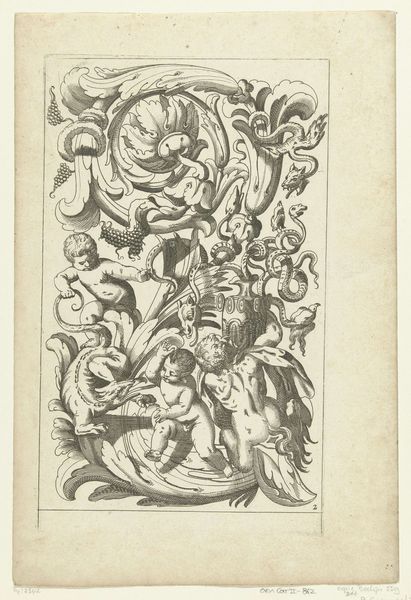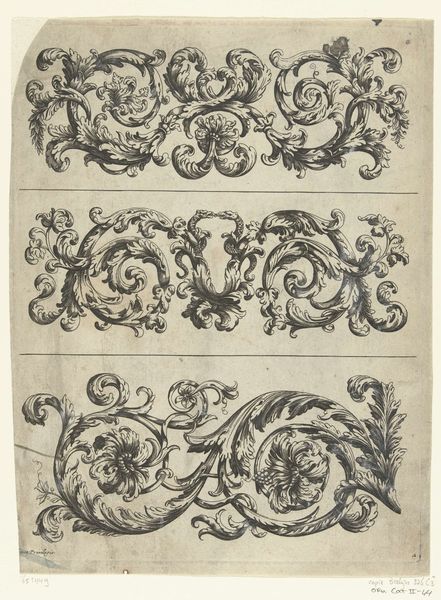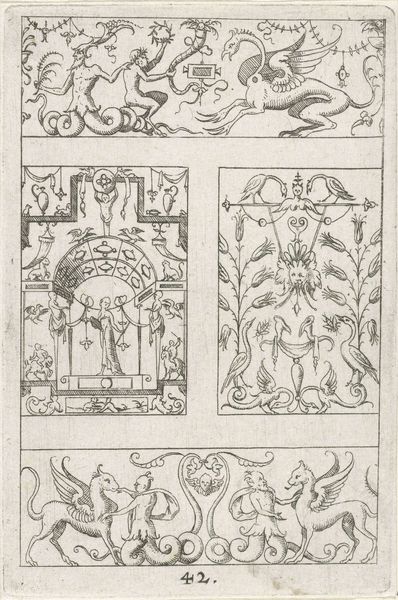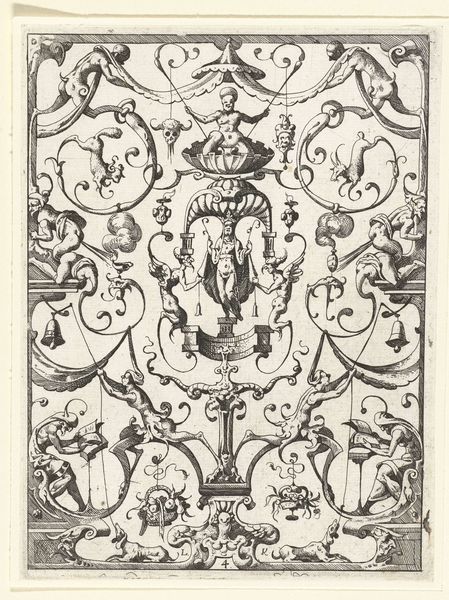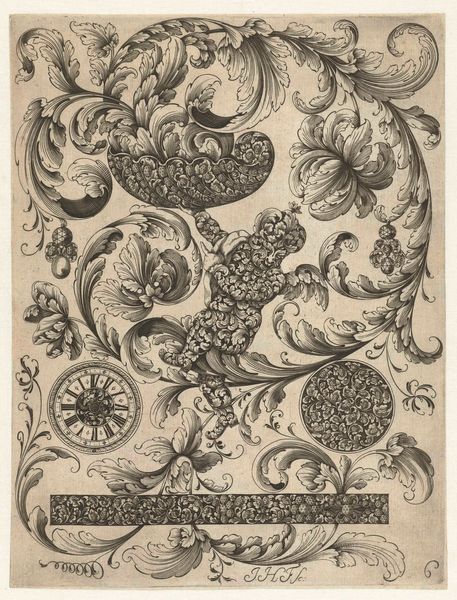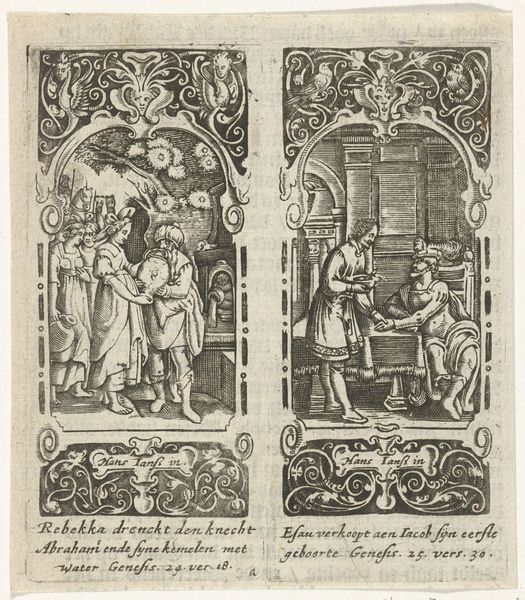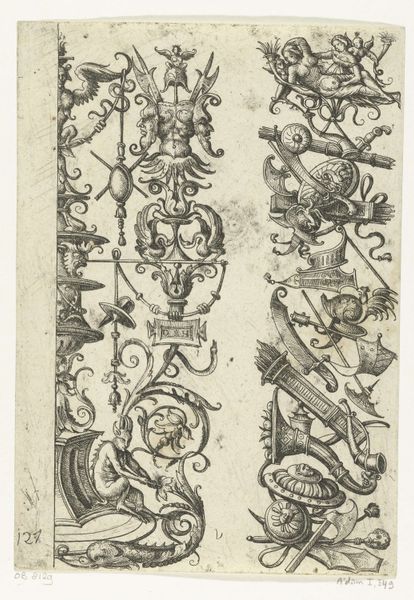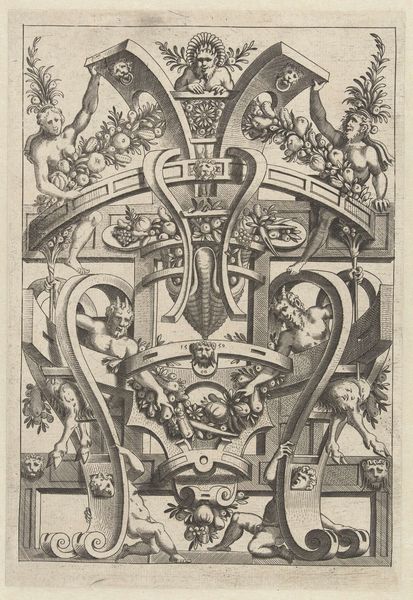
drawing, ornament, print, pen, engraving
#
drawing
#
ornament
#
baroque
#
pen drawing
# print
#
pen illustration
#
old engraving style
#
figuration
#
pen-ink sketch
#
line
#
pen
#
engraving
Dimensions: height 273 mm, width 187 mm
Copyright: Rijks Museum: Open Domain
Jean Lepautre's ornamental print showcases Roman-inspired motifs, intended for friezes and cornices. The cherubs, vases, and acanthus leaves are a revival of classical antiquity, echoing its idealized forms. But let us not forget the griffin, a composite creature, part lion, part eagle, which is far more ancient. The griffin appears as early as the second millennium BC in the art of the Near East and Mediterranean, guarding treasures and symbolizing divine power. The Renaissance witnessed its resurgence, adorning heraldry and architecture, evolving into a symbol of vigilance and courage. It is fascinating to see how the griffin, initially a fierce protector in ancient lore, assumes a more decorative role. This transformation speaks to the enduring power of symbols, which are never static, and evolve with the shifting sands of culture. By blending these symbols, Lepautre taps into a deep well of collective memory, evoking primal associations of power, beauty, and protection, engaging the viewer on a subconscious level.
Comments
No comments
Be the first to comment and join the conversation on the ultimate creative platform.
